To split a bee hive is like artificially inseminating a colony. Swarming is a natural way that colonies multiply. Hence, many beekeepers are curious about how to split a beehive.
Without it, the bees wouldn’t have existed for as long as they have. Every time a new queen emerges, the old queen would probably just fight her to the death, and the victor (in this case, Victoria) would continue to lead the subject in the same hive.
When the colony splits, it allows for bee pollination services to expand their outreach. It likewise helps to expand the gene pool of the honey bee as new queens can mate with drones from different colonies.
The downside of natural splits is that you have no guarantees that the newly exited queen and her entourage will want to make their new home in your apiary.
That’s when crafty beekeepers use a little deception method and perform what’s referred to as a hive split so that both the bees and beekeepers get what they want.
Splitting a hive can be accomplished with or without a new queen, which you’ll soon discover.
Regardless of how you split a beehive, to be successful, there are several factors you must first understand. These factors will significantly impact the likelihood of your split being successful.
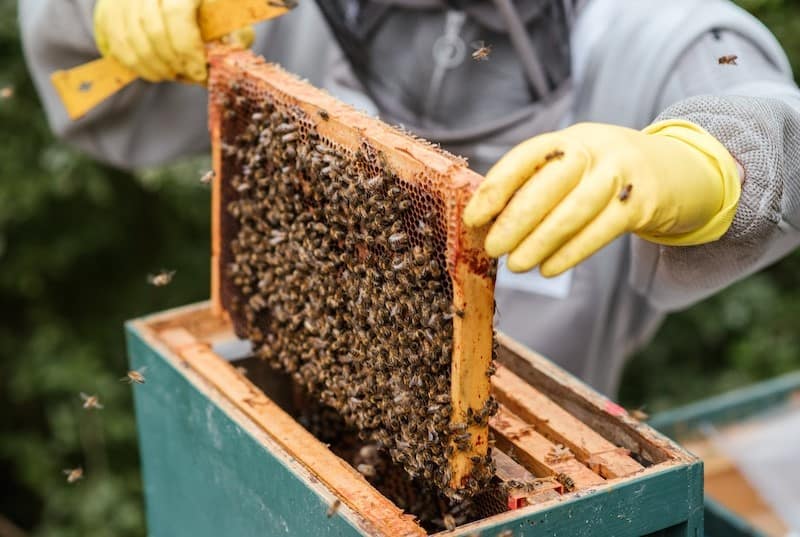
Understanding a Split Hive
Whenever you create a new colony from an existing colony, you split the hive.
Beekeepers will split colonies for various reasons, but usually, splitting the hive is done to put off swarming. Why? Well, when the conditions are right, a colony may feel the itch to divide itself into two, sometimes even three swarms and that will take away a lot of your honey-making workforce.
Swarms can also be a nuisance if they set up shop in an unwelcoming neighborhood, and the last thing you need is a homeowners association at your door baying for bee blood.
3 Primary Reasons Why Beekeepers Need To Split A Hive
Generally, beekeepers will split their hives for the following three reasons: swarm prevention, queen rearing, and to make up for lost colonies. Let’s now explore each one in greater detail.
1. Swarm Prevention
When it comes to splits for swarm prevention, you need to time it almost perfectly. The bees should be exhibiting those itching signs.
You’ll notice that the hive will be very populous, and there will be one or more swarm cells in the brood box.
Swarm cells are queen cells found at the bottom of the frame, so they are quite easy to spot.
Once you notice the presence of these swarm cells, the split should be done as soon as possible.

2. Queen Rearing
When you begin to rear queens, you will need to have swarms that can adapt your virgin queen before you find her a permanent residence.
These queenless hives usually comprise of nurse bees, some brood, honey, and pollen to keep them fed until some of the brood emerge to take over nursing duties, leading to the graduation of nurse bees to foragers.
Ideally, your virgin queen will be taken care of in a nuc hive, which usually holds about 5 frames.
3. Make up for Empty Beehives and Lost Colonies
Despite the declining number of colonies in the country, every season, beekeepers are able to populate some of their empty hives. They do this by splitting the existing swarms and providing them with a new queen.
All splits are risky, and sometimes, the new colony is unable to raise a viable queen, but if you do it right, you have over a 50% chance that it will be successful.
What You Need to Split a Colony
- Empty nuc or hive
- Protective gear
- Smoker
- Hive tool
- Queen (for splits that do not have a swarm cell)
- A thriving colony (no point in splitting a weak one)
6 Steps to Split a Hive with a New Queen for Swarm Control Purposes
I’ve broken down how to do a beehive split for swarm control purposes into six easy-to-follow steps. Let’s now dive into the nuts and bolts of splitting hives.
1. Grab an Empty Brood Box or Nuc
First things first. That’s going to be the hive for the new colony.
Get a Nuc that works like a small hive with space for a few frames and works well for splits.
2. Find the Queen
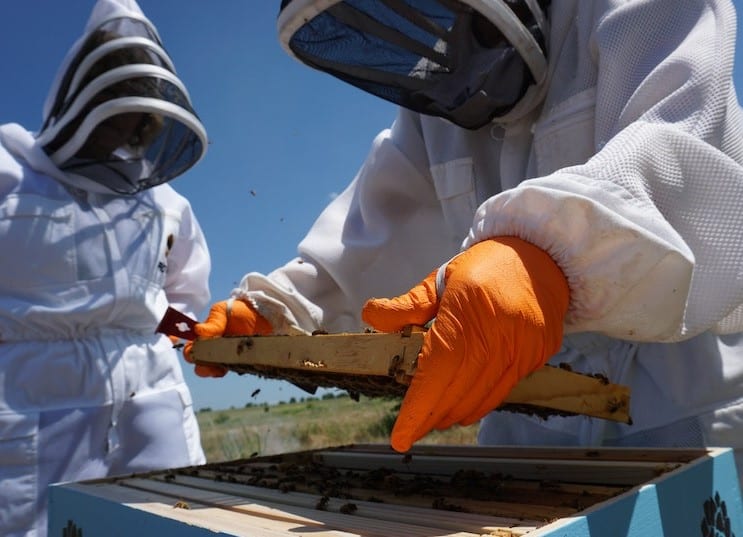
This is essential. You want to increase the success rate of the split by replicating what would happen in nature.
In the wild, or without your intervention, the old queen would be the one to exit the hive accompanied by a few thousand ladies who will take on the task of building comb and tending to the new brood once they find a suitable place to live.
Before this happens, they have to prepare the queen for the flight, which involves restricting her primary activity, laying eggs. This allows her size to shrink a little, and her wings will be able to manage her weight.
By the time you start to notice swarm cells, these preparations have already begun, making migration of the old queen natural. Once you find her, it is best to confine her. Make sure you keep an eye on your caged queen from time to time.
3. Stock the Nuc or Hive With the Next Generation
When you choose to split a hive, you will probably choose a strong hive with a prolific queen. You will need a frame or two of brood and eggs.
A good mix of both capped and uncapped broods would be beneficial because the capped brood will soon become nurse bees, allowing the existing nurse bees to turn to forage.
4. Brush in a Couple of Frames of Nurse Bees
Nurse bees are the lifeline of both brood and queen. You cannot have a successful queen without them. They are not very difficult to identify.
They have not ventured outside the hive, so when you lift a frame with brood, they are likely to stay put rather than take flight.
Their proximity to the brood makes it necessary for you, the beekeeper, to brush them into the hive rather than shake them. Shaking could damage the larvae in the cell. Hence, brushing is safer.
The brood will require not just food from the nurse bees but warmth as well, so ensure you get a good number.
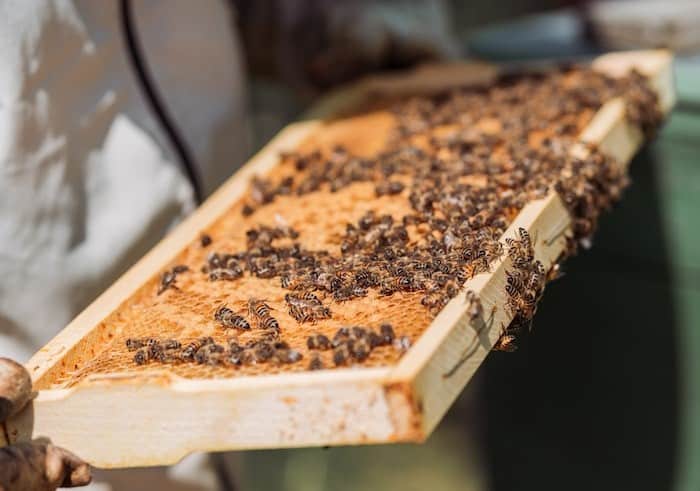
5. Place the Old Queen in the New Hive Unconfined
Ensure that there are no swarm cells on any of the frames that you have placed in the new hive.
If you don’t, the new hive could swarm. Fortunately, swarm cells are easy to spot, so cut out any that may be attached to the frames you have moved.
6. Stock the New Colony with Food
Ideally, this comprises a frame of honey and pollen. The nurse bees need pollen to feed the young and the queen, so this is important.
If you don’t have honey, ensure you provide syrup and pollen patties like these.
During this exercise, the new colony will likely be left without foragers until the capped brood emerges to take up nursing responsibilities. That could take a week or two, and the bees still need to feed during that time.
Without foragers, there’s no one to bring in nectar and pollen from the outside. So you’ll notice that there won’t be much activity around the entrance of the hive for the first week or so. This is why the food source is so important.
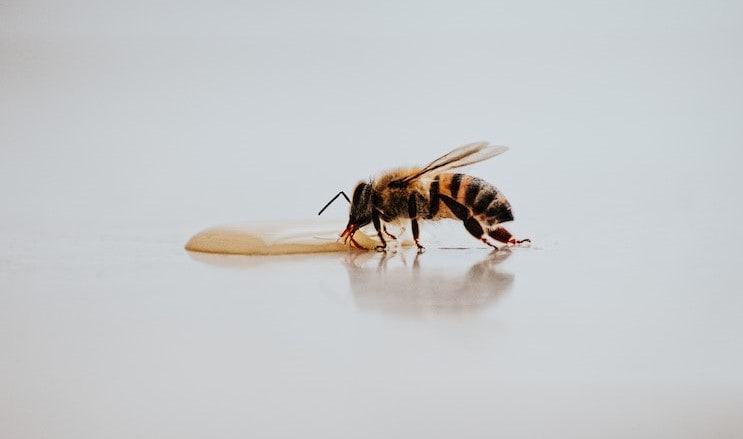
Finally, ensure that you have arranged the frames such that those holding the brood fall in the center of the hive and are flanked by the frames containing the honey. The image above shows the proper configuration for your new split hive.
This is how the hive is usually constituted, making it easier for the colony to keep the brood warm when temperatures fall at night.
Then, close up the hive, and you’re done. Well, for the time being, that is. You will need to keep tabs on the new queen.
Check her progress in about three to four weeks to see if she’s laying eggs. Sometimes the exercise fails, or the new queen becomes bird lunch as she goes on her mating flights.
If you don’t see any evidence of eggs in four weeks and can’t trace her, you may need to get some fresh brood and try again.
How to Split a Beehive Without a Queen
What if you need to split a beehive but don’t have a queen? Can you still perform one? Yes, this type of split is very similar to the one described earlier, with the exception that you do not move the queen.
In this instance, a clear understanding of the bee life cycle is key. You will need to identify a comb containing eggs, larvae, and capped brood. The eggs are particularly important because the new queen is likely to be raised from one of the eggs rather than the larvae.
The queen has very different dietary needs, and she is indulged at a very early age. Therefore, the bees will not queen just any larva. Instead, a couple of days after the egg hatches, the nurse bees will provide the chosen larva/e with special secretions designed for royalty.
They will build her a special throne, which is an extension of the cell because the queen is larger than the other bees and can’t fit in those tiny hexagons for very long.
Make sure you spot the egg in the cells designed for workers, not the larger drone cells. Bees are cool, but they can’t switch genders.
Once you’ve ensured you have the right mix of brood, just follow the steps above, and you will have done a good split. Then, in about two weeks, a new queen will emerge, and the new colony will be queen-right.
The Best Time (and Conditions) to Split a Beehive
Simply knowing the steps on how to split a beehive is not enough. You want to maximize your chance of success. Well, there are additional factors at play that will determine whether your efforts are successful or not.
Many beekeepers I interact with are curious about the best time to split a beehive.
The correct answer lies in nature. The best time to split a colony is during the swarming season, which is in the spring. Why? You are aiding the bees’ natural instincts. You’re playing their tune, so they are more likely to dance along to your rhythm.
So, please be aware that the most successful and best splits are done between spring and fall.
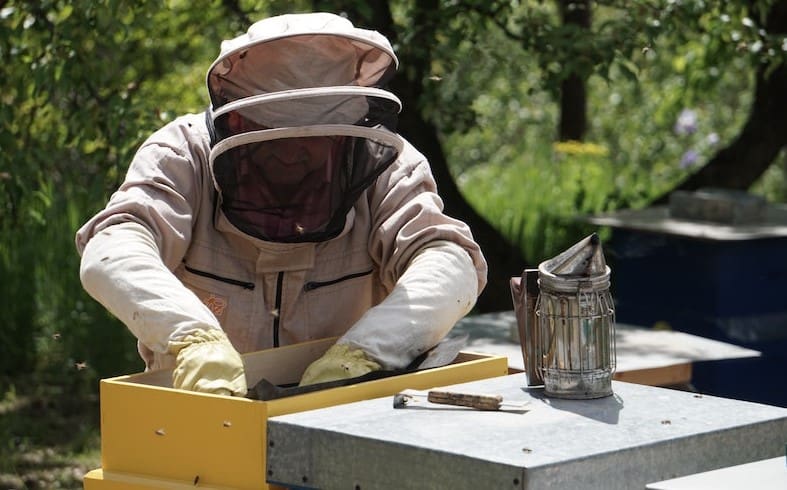
Once winter starts to seep in and temperatures start to fall, splitting a colony becomes a very bad idea.
In fact, the opposite is sometimes done in this circumstance. Some weaker colonies are combined by eliminating one queen to increase the survival of the colony over winter.
Additionally, when splitting a beehive, make sure they have plenty of food. If nature does not provide, then you must supplement their nutrition with sugar syrup and plenty of it.
Furthermore, ensure the hive or nuc that you will place the new swarm in is disease-free. You may have witnessed beekeepers dumping hives into a bonfire. It’s not frustration that leads them to it.
Usually, you’ll find that the colonies succumbed to a disease or pests such as the varroa mite. So, rather than risk infecting a new colony, the hives are destroyed.
If you want to reuse a hive whose previous inhabitants died all at once, it would be prudent to get it checked or, better still, destroy it altogether.
Final Words
Splitting a hive is just one of the many activities a beekeeper should get used to. Don’t let any failed attempts deter you.
Even the experts can’t boast 100% success. Splitting a beehive is a great way to maximize the productivity of your existing colonies.
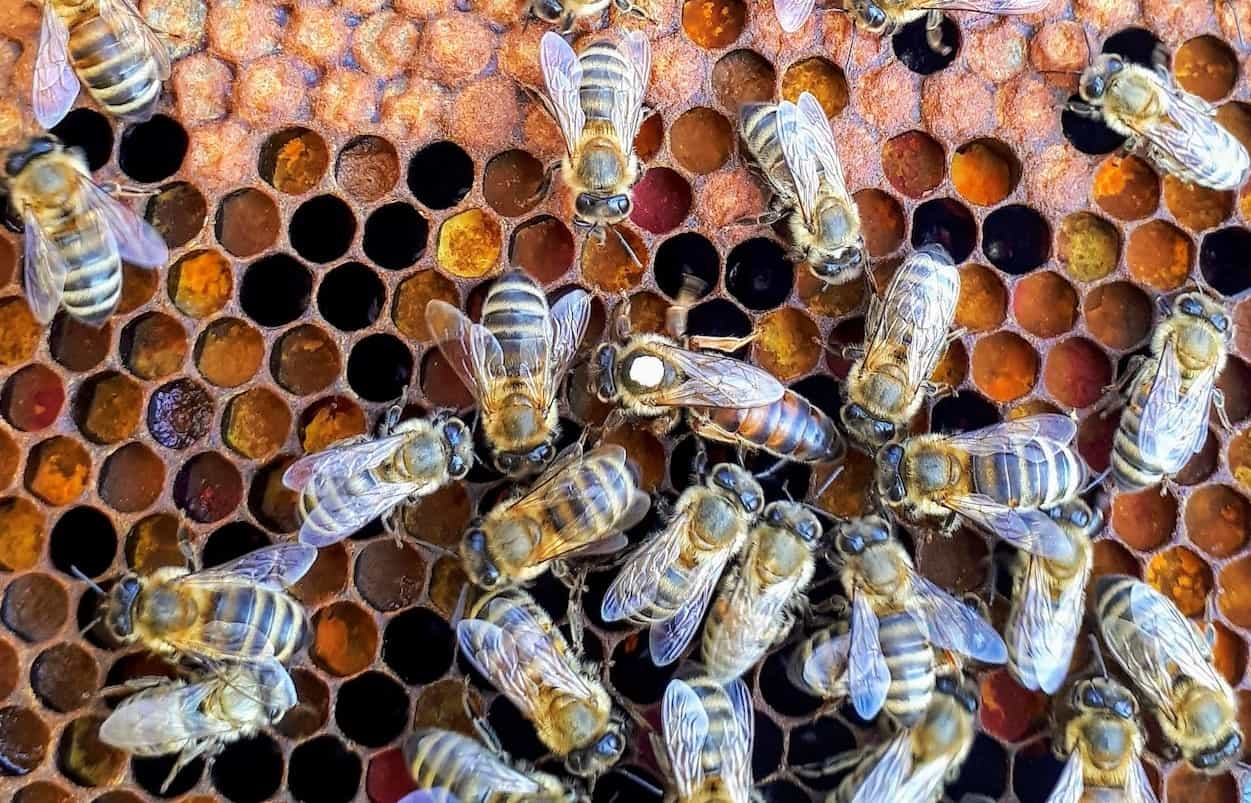

Thank you for sharing this great information, the way you have presented things in this article is amazing.
Great information! My two hives survived the winter and i have a new setup ready to accept a swarm or a split. Can’t wait to try my luck. Bees are Great! Just watching them at the hive is like meditating…. so relaxing. Thank you.
Thanks, this is great information as I will be doing my first split in a few days. One question I have is, do I need to move the new hive away from the original one? Need to know because I’ll have to reconfigure my electric fence if I do.
Thanks Again!
First of all Many Thanks for sharing your knowledge in beekeeping and passing on your expertise.
I am thinking in expanding my apiary for next year and I am thinking of rearing queens and creating splitting from my existing hive to home the new queens.
Do you think that to carry such project from the beginning of August is a good idea? Will the new queen be able to mate by the end of August?
I have already been feeding my colonies to make them strong for the splits.
Your guidance/ advice are most appreciated.
Thank you for such great information. I just started my bee keeping adventure last year. All of them have survived, although I have not been able to check on my girls since the bitter cold temps we have had this week. I am going to try to split a hive in just a couple of months, and I was wondering if the hives need to be spaced “so many feet” apart.
I have read from other beekeepers that they need to be at least 6 feet apart.